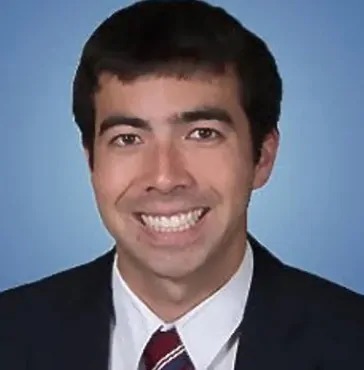How much caffeine in Death Wish coffee? If you are looking for the world’s strongest coffee, take a look at the caffeine content in Death Wish!

If you have trouble getting up in the morning, then a caffeinated beverage, such as a coffee blend from Valhalla Java, might help you. There is nothing like the caffeine in dark roast coffee from your coffee maker to wake you up. If you are looking for high caffeine content, you may even be thinking about going with Death Wish coffee!
When you are looking for caffeinated coffee or espresso, you are probably used to comparing coffee brands, different coffee shop options, and even an energy drink or two. You might have even tried k-cups from a Keurig or Saratoga Springs.
How much caffeine is in Death Wish coffee? Learn more about the amount of caffeine in your average cup of coffee below!
How Much Caffeine Is in the Average Cup of Coffee?
There are lots of people who drink a strong coffee or tea in the morning to wake them up. How much caffeine is in your typical cup of coffee? It depends on where you get your coffee from.
Fair trade coffee from India might not be the same as coffee from Peru. According to the FDA, some key benchmarks to know include:
- A typical soft drink, which is about 12 fluid ounces, contains between 30 and 40 mg of caffeine
- Caffeine in energy drinks can range anywhere from 40 to 250 mg of caffeine per 8 fluid ounces
- A cup of black or green tea contains between 30 and 50 mg of caffeine
- A standard 8-ounce cup of coffee contains between 80 and 100 mg of caffeine
If you speak to a barista at a coffee shop, such as Starbucks, you should ask how much caffeine is in various cups of coffee before you make a decision. That way, you can track your caffeine intake closely.
How Much Caffeine Is Too Much?
You should track your caffeine intake closely. According to more information published by the FDA, you should limit your caffeine intake to less than 400 mg per day. Furthermore, if you do not need caffeine to wake yourself up in the morning, you should stay away from it altogether.
That way, you do not risk developing a dependence on caffeine, which could lead to side effects, caffeine withdrawal symptoms, later. Even though the FDA does have a recommended limit, there is a wide variation regarding how people react to caffeine. Everyone has a different level of sensitivity to caffeine.
The sensitivity level can change over time depending on your caffeine intake and how you react to it. The faster you break down caffeine, the sooner it will leave your system. On the other hand, if your system takes a long time to break down caffeine, you may feel its effects for longer periods of time.

Furthermore, just because a cup of coffee might say “decaf” doesn’t mean a caffeine level is 0. Even though the stock reaches do have significantly less caffeine in them, it is possible for a cup of decaffeinated coffee to still have a few milligrams of caffeine. If you are someone who suffers negative reactions to caffeine, you should avoid coffee completely.
How Much Caffeine Is in Death Wish Coffee?
Some coffee lovers are looking for a brand of coffee with a tremendous amount of caffeine in it. If you are a strong coffee drinker, you might want to take a look at Death Wish coffee. When you take a look at Death Wish coffee, the skull and crossbones should immediately let you know that you are in for a ride.
According to published information, a single cup of Death Wish coffee contains more than 470 mg of caffeine. This is the equivalent of clothes to 5 cups of coffee. Furthermore, keep in mind that this is also more than the recommended limit of caffeine on a given day.
Therefore, anyone who is interested in trying Death Wish coffee should do so with caution. If you do not know how caffeine is going to impact you, you may want to try a different coffee brand first.
Final Word on How Much Caffeine in Death Wish Coffee
The average cup of coffee has between 80 and 100 mg of caffeine; however, the caffeine content in a cup of coffee can vary widely from brand to brand. Death Wish coffee, which claims to be one of the strongest coffee brands in the world, has more than 470 mg of caffeine in it.
Because the recommended limit of caffeine intake, according to the FDA, is 400 mg, it is critical to use caution when drinking Death Wish coffee. Everyone reacts to caffeine differently and some people get the jitters. Nobody should be drinking this much caffeine until they know how caffeine impacts them.
FAQs About How Much Caffeine Is In Death Wish Coffee
How does caffeine keep you awake?
When you feel tired, a neurotransmitter called adenosine is binding to its receptors in the central nervous system. When you consume caffeine, caffeine molecules block adenosine from binding to adenosine receptors. Therefore, you do not feel as tired when you drink coffee.
When your body metabolizes caffeine, your adenosine receptors are able to bind to adenosine once again. That is why you feel tired, sometimes called a caffeine crash.
How long does caffeine stay in your system?
Everyone reacts to caffeine differently. The half-life of caffeine is approximately 5 hours. This means that you consume 30 mg of caffeine, you will still have 15 mg of caffeine in your system approximately 5 hours later.
Remember that everyone has a different sensitivity level to caffeine. The effects you feel when you drink caffeine may not be the same as someone else.
Does decaf coffee still have caffeine in it?
Yes, decaffeinated coffee still has caffeine in it. Even though a cup of decaffeinated coffee has significantly less caffeine than a regular cup of coffee, you may still feel the effects of caffeine if you are particularly sensitive to it.
Caffeine Guides
How Much Caffeine Does Decaf Coffee Have?
How Long Does Coffee Keep You Awake?
Why Does Caffeine Make You Pee?
Caffeine Fatigue: 7 Reasons Why Your Cup Of Coffee Makes You Feel Tired
Does Nitro Cold Brew Have More Caffeine?
Do Old Coffee Grounds Have Less Caffeine?
Does Bubble Tea Have Caffeine? (Explained)
Does Adding Milk To Coffee Reduce Caffeine?
Does Espresso Lose Caffeine Over Time?
